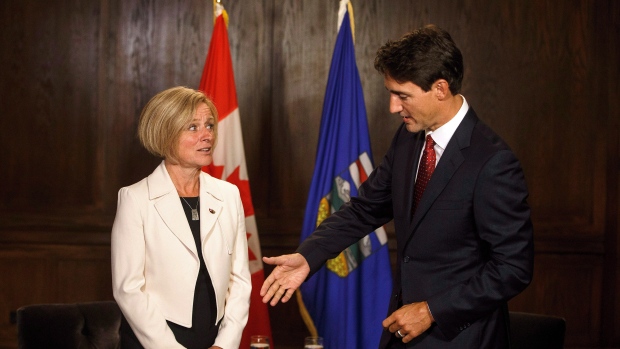Dec 19, 2018
Canada's energy crisis: BNN Bloomberg's 2018 Story of the Year
By Tara Weber

The energy crisis gripping not only Alberta, but the entire country, has sparked questions about the future of Canada's energy sector - and that is BNN Bloomberg's Story of the Year for 2018.
Here on BNN Bloomberg, we've been talking about these questions almost every day for more than a year. In 2018, the energy sector has been rocked by takeaway capacity constraints - in other words, a lack of pipelines - that have been driving up the discount on Canadian crude and squeezing the industry's margins.
There was a sense of optimism following the federal government's approval of the Trans Mountain pipeline expansion project in November 2017, but this year the project fell apart and sent Albertans to new lows.
The Federal Court of Appeal overturned the approval of the project this past summer, while larger-than-normal outages downstream due to refinery maintanence sent the differential on Western Canadian Select (WCS) soaring. The combination meant many companies were paying more to produce a barrel than they could sell it for.
But this is not just Alberta's problem. The financial impact is being felt by the entire Canadian economy. By the Bank of Nova Scotia's estimates, the steep discount on WCS against the North American benchmark Western Texas Intermediate has been costing Canada $80 million a day. The oil price slump has consistently been called a crisis and mentioned in GDP forecasts, and has been noted in the Bank of Canada's considerations of further interest rate hikes.
- Oil industry loans from feds are not what Alberta asked for: Notley
- Energy sector 'not looking for handouts': Whitecap CEO
- Economy faces 'fender benders,' but no recession in 2019: Poloz
RELATED
Meanwhile, Alberta Premier Rachel Notley has been driving home the message to the federal government that the province can't be the only one taking action. Alberta announced it will mandate oil production curtailments starting next month. It's also working to secure increased rail capacity later in the year. And just last week, Alberta set up a "real-time lost-revenue counter" - showing the billions of dollars that the Canadian economy is losing - outside the Liberals' Christmas party in Ottawa.
To its credit the federal government has made a number of announcements to ease the problems. It's extended Employment Insurance (EI) benefits in the hardest hit regions, and spent $4.5 billion to buy the Trans Mountain pipeline project from Kinder Morgan Canada in a bid to ensure the expansion goes ahead.
On Tuesday, Ottawa announced it will provide more than $1.6 billion - largely in loans through the Export Development Canada and the Business Development Bank of Canada - to help Alberta companies fund clean technology innovations, find new markets for their product and help with cash flow.
But those EI benefits are long gone for many oil patch workers. Their bills are piling up. Stress and anger have been simmering in Alberta for too long - and this year, it has reached a boiling point.
Albertans are increasingly feeling that most Canadians just don't get how the industry works; that there's a lack of understanding about how much it contributes - not only to the economy - but to innovations to reduce emissions. And earlier this year, thousands of people turned out at protests in Calgary chanting "Build that pipe," while both Prime Minister Justin Trudeau and Finance Minister Bill Morneau were met with demonstrators in Calgary in November.
While this week's funding announcement is appreciated, many Albertans felt it missed the key issue. They don't want a handout. They don't need more debt or help finding new markets. They need a way to reach those markets.
When it comes to Trans Mountain, the federal government is working to address a number of issues specified by the Federal Court of Appeal, but it has no timeline on when it may resume.
On top of that, the federal government has introduced bills C-48 and C-69, which much of the energy industry feels will only make future projects even more difficult to move ahead.
The three pipeline proposals currently underway in Canada - Trans Mountain, TransCanada Corp.'s Keystone XL and Enbridge Inc.'s Line 3 - all face hurdles.
The closest one to get up and running - Line 3 - is expected to be in service by the end of 2019. But that's still a year away. There is no quick fix.



